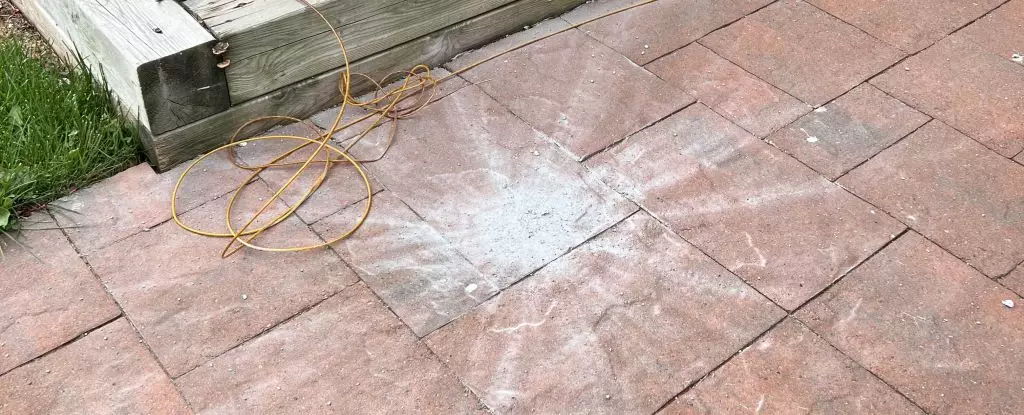In an era where technology has made capturing personal and unusual moments easier than ever, a particularly rare celestial event was recently documented in Canada. A July 2024 occurrence on Prince Edward Island produced not just visual evidence but also unique acoustic information rarely associated with meteorite falls. This incident sets a precedent in meteorological studies and the intersection of technology and nature.
The Scene of the Impact
Joe Velaidum and Laura Kelly returned home one day to discover an unusual sight on their paved walkway. They were out with their dogs when a loud impact occurred just outside their door. The significance of the gray debris they later found went unnoticed until family members mentioned having heard a striking noise, leading Velaidum to check his Ring doorbell camera. The surprise of finding that the camera captured both the footage and the sound of the impact itself brought forth a moment of astonishment.
The couple had been mere moments away from standing directly in the line of the meteorite’s descent. Velaidum reflected, “If I’d have seen it, I probably would’ve been standing right there, so it probably would’ve ripped me in half.” This chilling thought underscores the unpredictable nature of such cosmic events and the fact that they often occur beyond a human’s control or awareness.
The Scientific Significance
This event garnered attention not only for its astonishingly rare documentation but also due to its scientific implications. Chris Herd, a notable geologist from the University of Alberta, investigated the fragments obtained from the site. According to him, this meteorite could represent the first recorded instance of a meteorite fall where both sight and sound were captured. Herd stated, “As the first and only meteorite from the province of PEI, the Charlottetown Meteorite sure announced its arrival in a spectacular way.”
With meteorites entering Earth’s atmosphere regularly—approximately 48.5 tons every day—the chances of such vocal phenomena being documented were slim. That pieces survive this perilous journey and reach the Earth’s surface is even rarer, making every detail of this occurrence noteworthy.
Understanding Meteorite Types
The meteorite found in Charlottetown belongs to the class of ordinary chondrites, which are among the most common meteorites. These celestial rocks are primarily composed of non-metallic minerals that date back to the origins of the solar system. They have not undergone significant transformation, retaining information about the primordial dust and gas that contributed to the birth of the solar system itself.
While around 90 percent of retrieved meteorites fall into this category, their significance in understanding solar system formation is immense. Analyzing these fragments can glean insights into the conditions present during the early stages of planetary formation, allowing scientists to piece together a clearer picture of our cosmic history.
In the aftermath of the meteorite fall, Velaidum and Kelly collected the remnants that had scattered during the impact. Interestingly, the event also created a tiny crater, only 2 centimeters in diameter, marking its extraordinary occurrence. This blend of artistry and science presents a compelling narrative of nature’s unfathomable phenomena.
Though meteorites have fallen on Earth throughout history, the recorded events remain few and far between, and documented examples of their impact accompanied by sound are virtually nonexistent. Most meteorites fall into the oceans or sparsely populated areas, which emphasizes the rarity of this chapter in meteorological history.
If the idea of having a meteorite fall onto your property seems far-fetched, the reality remains that space dust continuously rains down on Earth. While it may be challenging to distinguish between atmospheric debris and human-made pollutants, those adventurous enough might consider scavenging roof gutters for microscopic particles. The allure of space dust remains, and the chance encounter with the remnants of celestial events continues to tantalize.
In a world where technology helps us capture fleeting moments, Velaidum and Kelly’s experience serves as a clarion call to the beauty and unpredictability of our universe. As scientific advancements continue to unveil the mysteries of our solar system, incidents like the Charlottetown Meteorite will remain a source of inspiration and inquiry for generations to come.


Leave a Reply